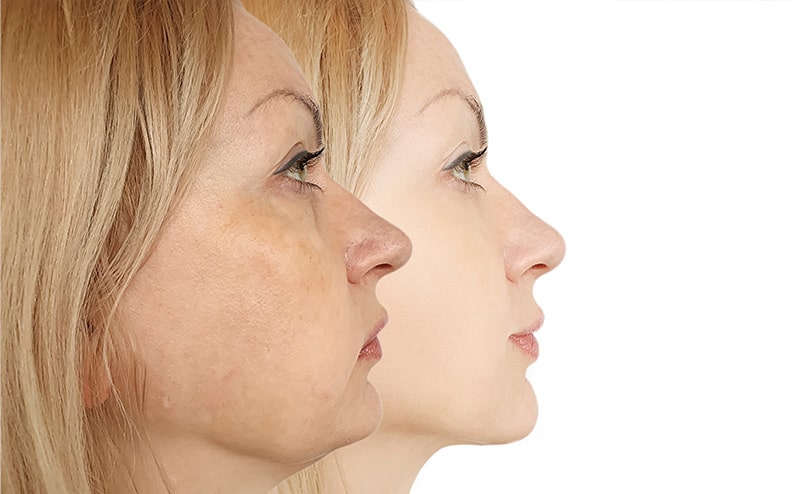Liquid Facelift in Virginia, Washington D.C. and Maryland.
Embark on a journey of aesthetic excellence with The Naderi Center. Experience unparalleled artistry and precision for transformative beauty.
Liquid Facelift Benefits for a Fresh Look
Discover the groundbreaking potential of the Liquid Facelift, the cutting-edge solution to the visible signs of aging. At The Naderi Center in Virginia, we’ve mastered this non-surgical rejuvenation that promises a youthful transformation without the scalpel. Dive into the perks of this innovative approach and let your beauty resonate.
Non-Invasive Elegance
Experience beauty enhancement without surgery. The Liquid Facelift delivers noticeable results, ensuring you look refreshed, not "redone."
Quick Recovery
Bypass prolonged downtime. With the Liquid Facelift, you're back to your day-to-day swiftly, enjoying a youthful glow.
Tailored Treatment
Crafted for you. Our specialists at The Naderi Center ensure each Liquid Facelift is customized to your unique features, guaranteeing natural, stunning outcomes.


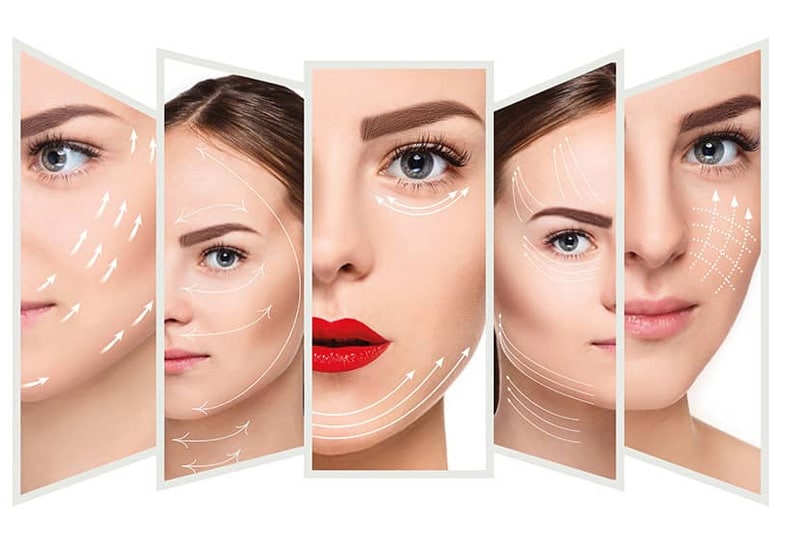
What Is Liquid Facelift?
The liquid facelift is a non-surgical, anti-aging procedure that is a combination of botox and multiple syringes of dermal filler injections. Botox® and Dysport® injections work to remove fine and deep wrinkles by relaxing the muscles that cause the formation of the facial lines. Dermal fillers are used to fill in and smoothen creases and lines, restore lost volume in parts of the face, and, in certain cases, enhance and augment specific facial features. Every liquid facelift is unique and customized to the individual’s signs of aging and facial structure and anatomy.
The aging process begins in one’s 20s and continues to accelerate as we age. It is estimated that after the age of 20 you lose one percent of the collagen in your face per year of life. The loss of collagen contributes to the formation of the signs of aging that most people seek to address with their plastic surgeon.
Signs of Aging Include
Wrinkles And Fine Lines
- Appear around 30 years of age
- Small, shallow wrinkles around the mouth and eyes
- Dynamic wrinkles appear on the forehead and are noticeable when we change our facial expressions
- Become more permanent with aging
Loss Of Volume
- Noticeable around 40 years of age
- Sagging skin and flattening of cheeks
- Face begins to appear tired, fatigued and sad
- Nasolabial folds (folds between the mouth and nose) deepen and line formation around neck becomes evident
Loss Of Elasticity And Deep Wrinkles
- Appear around 50 years or age
- Loss of firmness of skin
- Skin becomes drier and less radiant
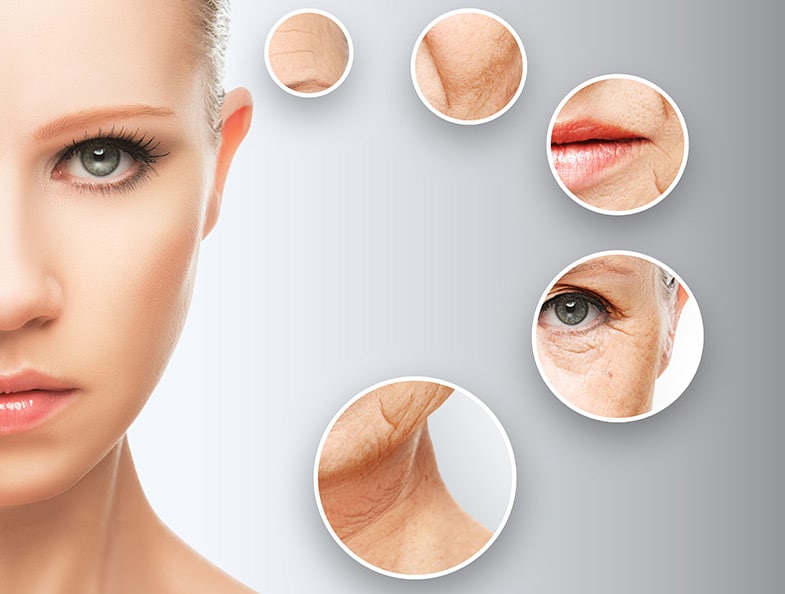
Causes of Aging:
External factors of Aging
- Sun exposure
- Pollution
- Smoking
- Nutrition
- Skincare
Internal Factors of Aging
- Hormonal changes and menopause
- Natural collagen breakdown
- Genetics
Ideal Candidates for Liquid Facelift
The ideal candidate for a liquid facelift will be someone who can achieve correction of the signs of aging through use of botox and dermal fillers. There comes a point where certain signs of aging can only be corrected through surgical intervention. It is key to consult with an experienced plastic surgeon or dermatologist in order to ensure that your goals cans be achieved non-surgically.
Good candidates for liquid facelift:
- Have fine or deeper facial lines
- Are starting to form mild jowls
- Have “smoker’s lines” around the mouth
- Have sunken and flattened cheeks
- Are starting to develop some lines around the neck
- Have hollowed out temples (sides of forehead)
- Desire to improve hollowness underneath the eyes
- Hold realistic expectations of what is achievable through non-surgical treatments as well as what would require surgical correction
Testimonial
“Love going to Dr. Naderi!! He is a talented doctor and a true artist. He’s taken the time to ask me about what I want and understands what I’m looking for. He knows how to balance what the patient wants with what is in the best interest for the patient. I’ve gone to him for fillers and he’s great at giving me a subtle, yet noticeable difference. I live in Michigan and travel for his services because I won’t trust my face with anyone else. I will certainly be coming back from Mich-again!”
Liquid Facelift Techniques
Liquid facelift techniques vary depending on the region or regions of the face that are contributing to an “aging” appearance of each individual.
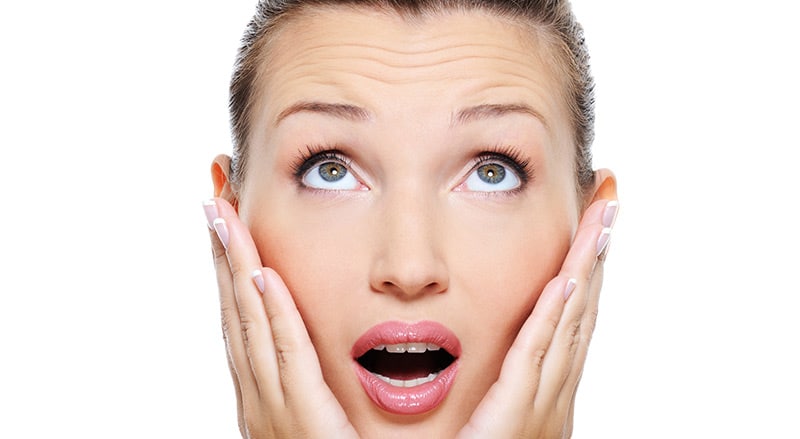
Forehead
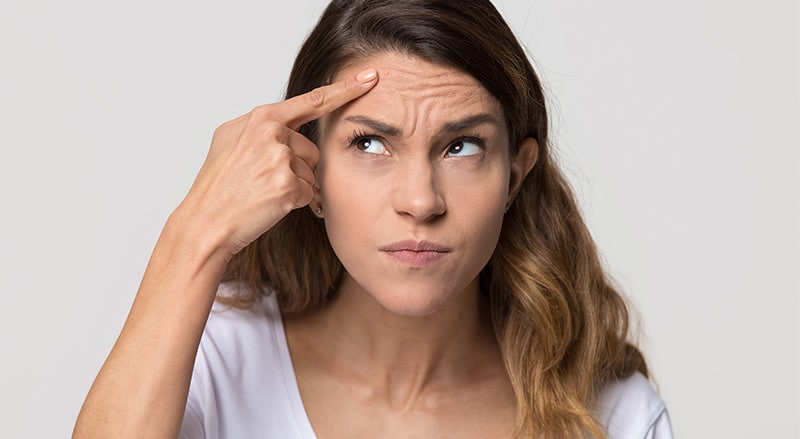
Frown Lines (Glabellar Complex)
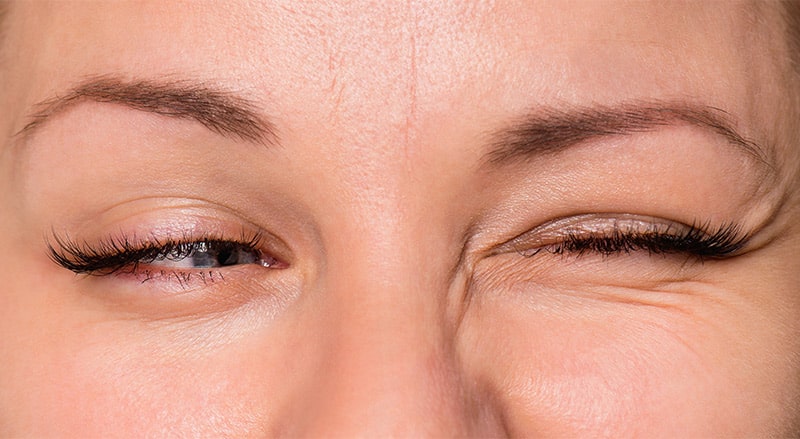
Bunny Lines
Bunny lines are straight, diagonal lines on each side of the nose running downwards from the inner corners of the eye towards the nose. They are caused by the levator labii superioris alaeque nasi muscles and when the upper fibers of nasalis muscle flex on the sides of the nose. Bunny lines are usually seen when smiling. Botox can help maintain a youthful look by relaxing the muscles that create the bunny lines.
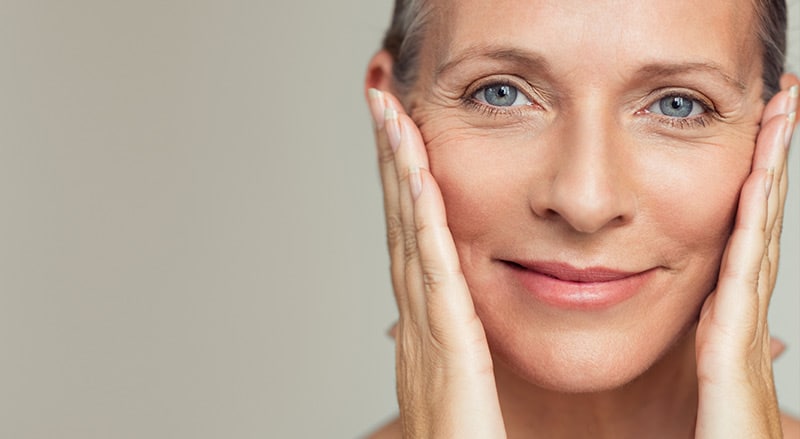
Temples
A “sunken” look with circular hollowness or depression in the temples on the sides of the eye on the edge of the face. The temples are formed by the frontal, parietal, temporal, and sphenoid skull bones joining or fusing together. Temples are found on the lateral sides of the face near the eyes and between the forehead and ears. The temporal muscle covers the temples area and is used when chewing. Hollowed temples may form in the aging process when the skin loses its elasticity and begins to sag down the face. Filling in the temples with dermal filler can reverse temporal hollowness.
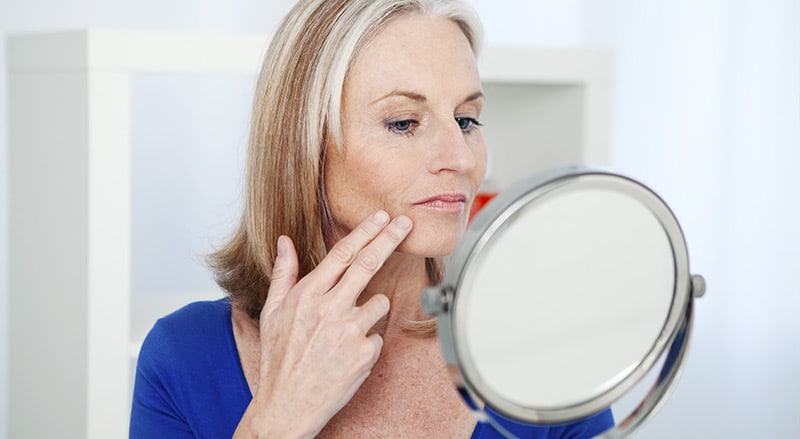
Cheeks
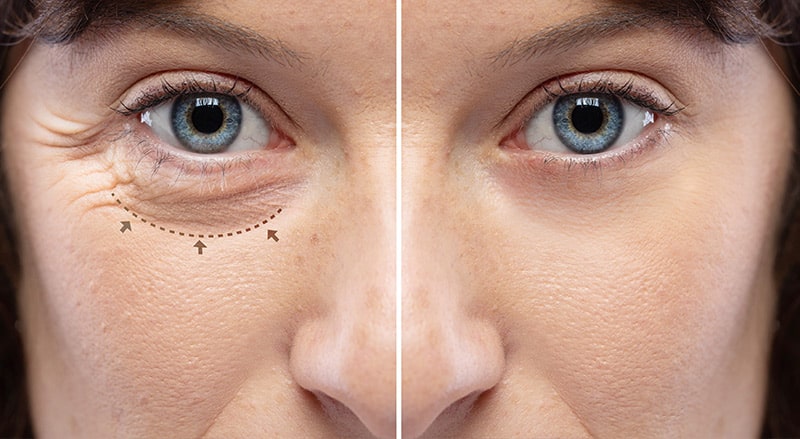
Tear Troughs
Hollowness or darkened circles may appear under the eyes due to the loss of facial volume in the tear trough region. The superior or top region of the orbicularis oculi, levator labii superioris, and the medial levator labii superioris alaeque nasi muscles border the tear troughs. These troughs under the eyes are created when skin laxity increases in the aging process and subcutaneous fat in the face is loss leading to thinner skin under the eyes. Thus, a depression is formed between the lower eyelid and top of the cheeks. Tear troughs can be filled with Restylane® or Volbella™. For tear troughs with thin skin, Volbella™ is preferred.
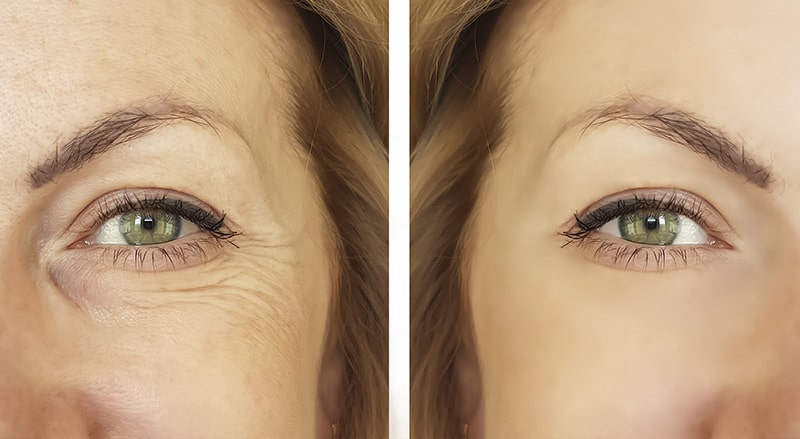
Crow’s Feet
The skin on the outer sides of eyes and under the eyes become thinner and delicate thus creating fine lines and wrinkles. Crow’s feet are the number one reason why young people walk into a plastic surgeon’s office asking for botox. When the orbicularis oculi muscle moves, facial expressions are formed thus the muscle contributes to the formation of crow’s feet on the lateral sides of the eyes. The zygomatic muscles can also contribute to the formation of these kind of wrinkles with continuous and repeated movement. When you smile, frown, and squint, you can see the formation of crow’s feet. Botox can help maintain a youthful look around the eyes by preventing the scrunching of lines around the corners of the eyes.
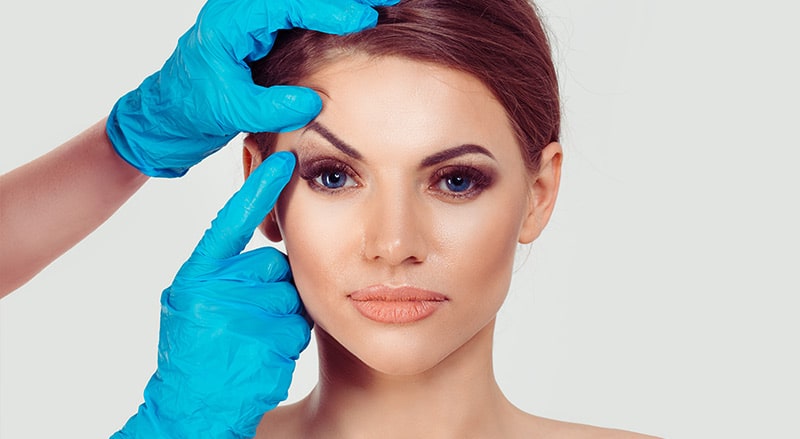
Brow Droop Or “Brow Ptosis”
The muscles begin to weaken with age, thus the outer ends of the eyebrows begin to droop and make the eyes looked weighed down. The frontalis muscle is responsible for elevating the eyebrows, and the skin on the forehead. The forehead muscle weakens in the aging process as with any facial muscle. Thus, the brow, especially the ends, starts to taper towards the temples rather than look uplifted. Botox in some cases can help maintain an uplift look to the eyebrows.
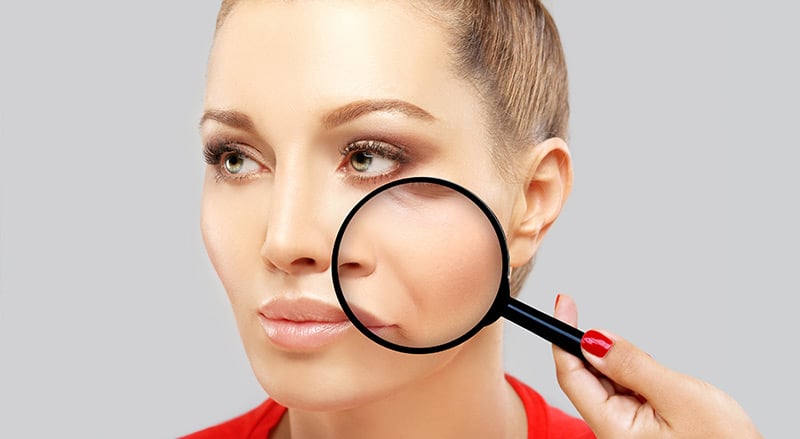
Nasolabial Folds
Nasolabial folds are fine lines that reach from each side of the nose to the corners of the mouth. These lines can deepen or become more apparent. The levator alae muscle, or levator labii superioris alaeque nasi, and lip elevator muscles contribute to the nasolabial crease. The crease is also created with repeated use of the muscles in that area and loss of volume in the face. For deep nasolabial folds, Restylane® or Juvederm®Ultra Plus would be used; for thin lines, Vollure could fulfill this area.
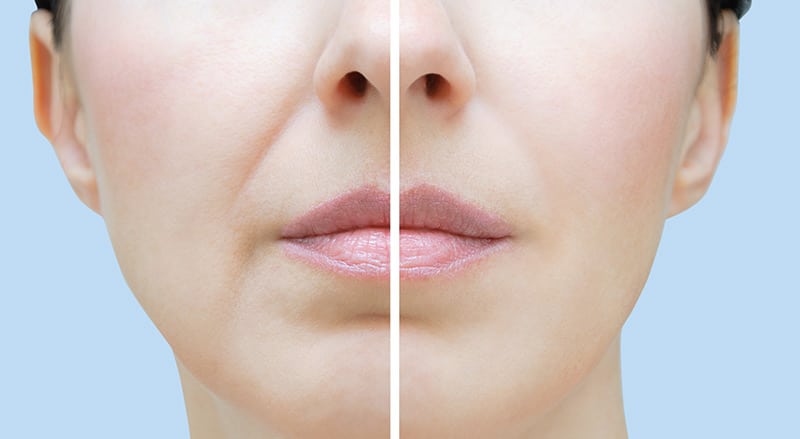
Marionette Lines
Marionette lines are fine lines extending diagonally from the corners of the mouth to each side of the chin. The fine lines can deepen like the nasolabial crease with the aging process. Downward gravitational pull causes skin to sag and drop. In addition, the depressor anguli oris (DAO) muscle contributes to the fine lines on the lateral sides of the mouth, which causes a sad expression by pulling down the corners of the mouth. These lines can be corrected with Juvederm® Vollure or Juvederm® Ultra.
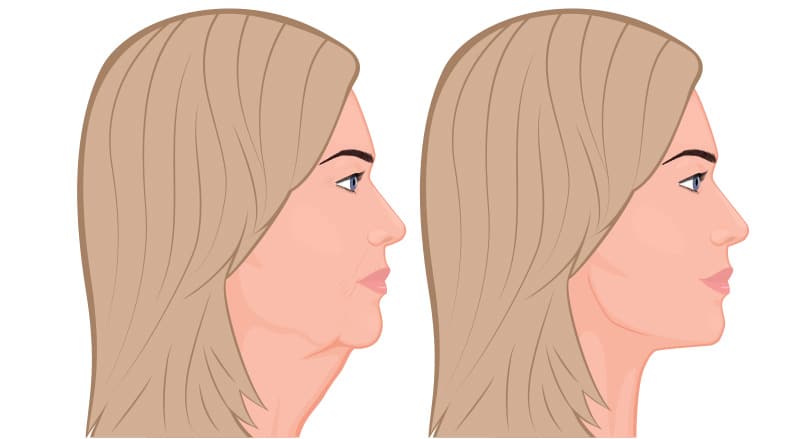
Jowls
Jowls consist of the dropping of the lower parts of the cheeks. Jowls are formed from the overall weakening of facial muscles that happens during the aging process. Thus, the volume left in the face drops down towards the bottom of the face creating a less uplifting look and a more heavy expression. Loss of skin elasticity from loss of elastin and collagen production also contribute to jowl formations.
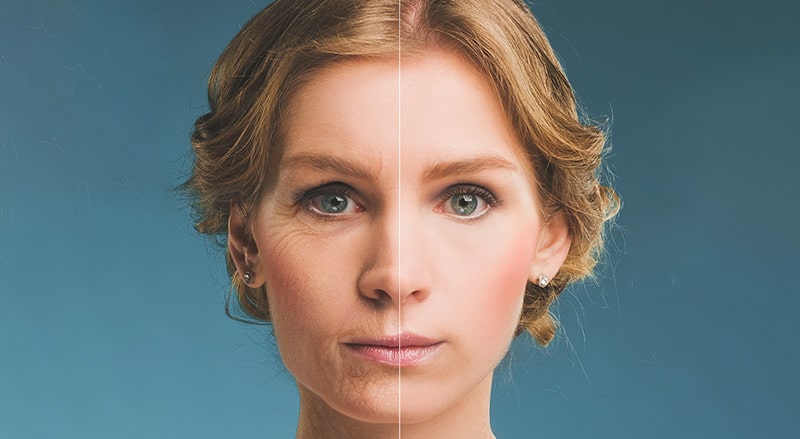
Lips (Border And Volume)
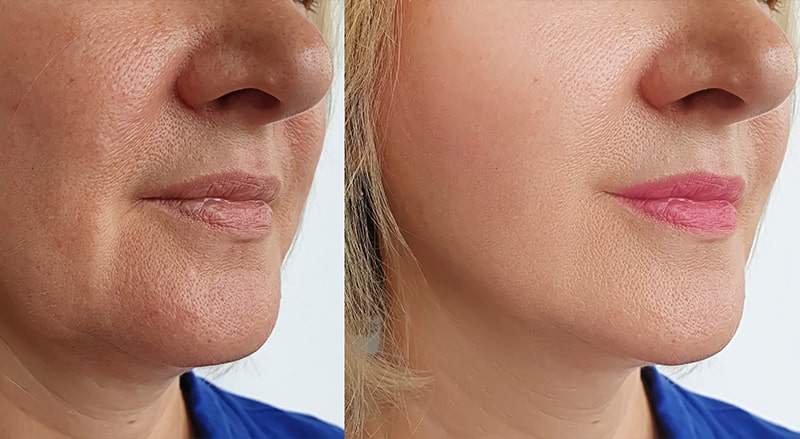
Chin (Mental Crease)
The chin begins to look smaller or more recessed as skin loosens around it. The chin can also feel the effects of the downward pull of gravity from weakening facial muscles. In the aging process, the skin becomes less elastic on the face and falls onto the chin and jaw giving a sagging appearance. Voluma™ is a preferred filler at The Naderi Center for chin injections.
Liquid Facelift Pricing
Preparing for your liquid facelift
Botox Injections
- In-office procedure takes between five to fifteen minutes to complete
- We ask that you avoid rubbing your face
- Results are visible in 3-5 days
- Must be repeated three to four times per year for best results
- Most patients find that results last an average of 3-4 months (touch-up to maintain optimal look)
- Goal is to weaken the targeted muscles without allowing them to regain bulk or strength
Dermal Filler Injections
- In-office procedure that takes five to fifteen minutes to complete depending on how many fillers used
- Lasts up to one to two years
- Suggests touch-up every 6-9 months to maintain optimal look
Preparation
2 Weeks Prior to Botox and Filler Injections
To reduce and minimize bruising, please follow our dietary restrictions. For two weeks before your appointment, avoid nuts, seeds, fish, fish oil, NSAIDs, supplements, and anything that prolongs bleeding or are anticoagulants. Talk to your primary care doctor or physician specialist if you are on a blood thinner. We do not recommend patients that are on life saving medications stop medications in order to have any cosmetic procedures performed.
(Filler Injections) Patients who are prone to cold sores will need to start a prophylaxis dose of an antiviral medication prior to their injection treatment. Your physician provider will prescribe this medication prior to your treatment.
Day of Botox and Filler Injections
- Wear little to no makeup as much as possible
- Make sure you have eaten and your blood sugar is not low
- It is not uncommon for patients to “pass-out” or get “vaso-vagal” during their injection. Most people are not fond of needles. Having a good blood sugar and being hydrated will make it less likely that you will feel queasy during your treatment.
- Make sure you have drank plenty of water and are not dehydrated
- Dress in cool comfortable clothes
- Come in at least 30 minutes ahead of your appointment if you like numbing cream
- Make your appointment for the next time before leaving the office since our doctor’s schedules book out months in advance. Botox®/Dysport® wears off in 3-4 months on average and must be repeated 3-4 times a year. Filler longevity depends on product used and area injected, most patients need repeat injections in 6-9 months.
Recovery after botox and filler injections for a liquid facelift
What to expect after your liquid facelift
Final Results
- Botox may take up to 2 weeks to fully work (may start to notice effect as soon as 3 days but do not be surprised if you have to wait the full 2 weeks).
- Filler results will be final at two weeks. Any asymmetries and volume from swelling will have settled down after two weeks.
Numbing Cream
- If numbing cream was applied for your procedure, numbing effects may last another 1-2 hours after your procedure.
Swelling, Bleeding and Bruising
- Some swelling, pinpoint bleeding, and bruising around injection point is normal.
- Following our dietary instructions minimize swelling, bruising, and downtime
- You can use makeup and concealer the day of your injections to cover up any bruising
Ice, Ice, Ice
- Use small bag of frozen peas or crushed ice on injection area (do not use heavy ice bags)
- Ice 20 minutes on and 20 minutes off
- Continue icing for 48 hours if possible
No strenuous exercise
- Avoid heavy lifting and high impact cardio for 48 hours to reduce swelling and bruising
Avoid manipulating injection areas
- Do not massage, rub, or poke the area unless specifically advised by your physician
- You can wash your face but gently
- Avoid facials or rough scrubbing of the face for one week after the procedure
Non-surgical rhinoplasty
- Avoid glasses if they “dig into” the injection area (bring you glasses to your appointment for Dr. Shervin Naderi to determine its appropriateness for wear after non-surgical rhinoplasty
- For avid swimmers, mention your use of swim goggles during consultation
Arnica supplements
- Taking Arnica supplements quickly help reduce appearance of bruises
Eat pineapples and drink pineapple juice
- Pineapples have natural anti-inflammatory properties that help minimize swelling after injections
Do not over-evaluate your face the first 2 weeks
- Normal to have bruising, swelling, and/or asymmetry the first two weeks after injections
- Wait two weeks for swelling and bruising to be completely gone before you can appreciate your finals results
Take Tylenol for Pain
- It is normal to experience some pain and sensitivity in the area of the injection
- Tylenol can help relieve post-injection pain
- Avoid NSAIDS (Motrin, ibuprofen) which can make swelling and bruising worse
Risks, Safety, and Potential Complications of the Liquid Facelift
Common and expected side effects of dermal filler injections include the following:
Bruising After Your Liquid Facelift
- May last 1-2 weeks but bad bruises can last up to 4 weeks. That is not abnormal. Bruises can show up several days after the treatment.
- Bruising can be covered with full coverage concealer such as Neostrata which we sell in the office or Cover Fx brand from Sephora.
- Tear troughs and lips are more likely to bruise because these areas are more vascular than other parts of the face.
Swelling After Your Liquid Facelift
- May not always be even from side to side depending on pre-existing facial asymmetry, volume of injection, and bleeding at each injection site.
- Initial swelling takes 2 weeks to settle.
- Sleeping propped up and icing can minimize this side effect.
- Avoid exercise for the first 48 hours or longer as swelling increases when working out.
- Do not manipulate or massage area as this can aggravate swelling
Subtle Results After Your Liquid Facelift
- 1 syringe of filler is the equivalent of 1/5th a teaspoon in volume. After swelling subsides, there may be a need for additional filler injections if you desire increased volume.
- Our doctors are very conservative and do not over-inject patients. Our physicians prefer to add volume slowly with time to achieve the desired result.
- The first time you get injections, the results tend to go away faster. With repeated treatments, results last longer as you build your own collagen around the injection sites.
Asymmetry After Your Liquid Facelift
- Asymmetry can be related to swelling. Give it 2 weeks before deciding whether asymmetry is from filler volume differences or swelling.
- Please keep in mind that once you start to analyze your face, it is not rare to start to “notice” new asymmetries that have been there your entire life.
Lumps And Bumps After Your Liquid Facelift
- The filler is going to feel firmer than your own tissue. Do not massage or manipulate the area.
- The feeling of lumps and bumps usually improves within 2 weeks as swelling resolves.
Dry Lips After Your Liquid Facelift
- Lips will become more dry post-injections. Ice the areas and keep lips lubricated with Vaseline or Aquaphor. No more than 20 minutes of ice at a time.
Possible Complications After Botox
- Hypersensitivity or allergic reactions
- Infection
- “Frozen look.” Botox works by weakening certain muscles of expression and must be injected in a correct pattern for natural expressions.
- Flu-like symptoms
- Minor headaches can occur
- Eyebrow or eyelid droop with possible double or blurry vision
- Muscle stiffness or weakness can theoretically occur, especially in patients with Myasthenia Gravis
Possible Complications After Dermal Filler Injections
- Hypersensitivity or allergic reactions
- Cold sore or herpes simplex virus outbreak
- Acne breakout
- Skin necrosis
- Intravascular injection leading to skin necrosis and even blindness
- Sterile abscess
Please notify our office immediately if you feel that you may be experiencing any of the above possible complications after your filler injections.
Why Choose Us?
Specialization matters! Dr. Shervin Naderi was just named “Top 25 Injector” by the 10-million-member community of RealSelf. Out of 2000 nominees, Dr. Naderi was chosen as Top 25! This is a huge honor being recognized by the national and international community of RealSelf, the most trusted and authoritative site for all unbiased plastic surgery research.
Dr. Naderi is one of only 4 winners in the South East region of the United States. His patients regularly fly and drive to The Naderi Center from all over the country for his unique style of Botox and Filler injections and have known how good he is. The doctors all over the world who regularly use his online tutorial videos to learn and enhance their own technique have always respected Dr. Naderi’s injection skills. But now it is official. Dr. Naderi is in a class so exclusive that only 25 out of 2000 can claim they are most beloved injector.
Dr. Naderi is a Board Certified Facial Plastic Surgeon and a National Clinical Trainer for Allergan and Medicis. He teaches other doctors how to inject Juvederm, Restylane, and Perlane properly. Other doctors from all over the world refer to Dr. Naderi’s instructional videos on YouTube to fine tune and improve their own Filler injection Techniques.
Dr. Kulak is a Facial Plastic Surgeon with a gentle, artistic female touch and her patient love her nearly-pain-free techniques. She focuses on facial rejuvenation with advanced minimally invasive techniques as well as more invasive face lift and eyelid lift surgeries.
Dr. Alexandra Snodgrass is a board certified dermatologist who trained with Dr. Shervin Naderi prior to joining The Naderi Center. Dr. Snodgrass is expert on a variety of filler types and injection area techniques. Dr. Snodgrass’s dermal filler injections create a noticeable yet natural rejuvenation of the face.
Contact us to schedule a consultation for dermal filler injection with one of our specialists at The Naderi Center for Plastic Surgery and Dermatology. We are located in the greater Washington DC area with two locations, Chevy Chase, Maryland, 301-222-2020 or Reston, Virginia, 703-481-0002. For out of town patients we offer virtual consultation prior to your visit which can be arranged by filling out our contact us form.
Liquid Facelift FAQs
Who is qualified to perform a liquid facelift at The Naderi Center?
Who is an ideal candidate for a liquid facelift?
An ideal candidate is someone with mild to moderate signs of aging, such as volume loss, sagging skin, or wrinkles, who wants a non-surgical alternative to a facelift. It’s best for individuals with good skin elasticity and realistic expectations about the results.
What should I expect during a liquid facelift procedure?
During the procedure, a specialist will strategically inject dermal fillers and Botox into targeted areas of your face to restore volume and smooth wrinkles. The treatment usually takes 30 to 60 minutes, with minimal discomfort and no significant downtime.
How long do the results of a liquid facelift last?
Results from a liquid facelift typically last between 6 to 18 months, depending on the types of fillers used and individual factors such as metabolism and skin condition. Regular touch-up treatments can help maintain the desired look.
Are there any side effects of a liquid facelift?
Common side effects include temporary redness, swelling, bruising, and tenderness at the injection sites. These effects usually subside within a few days. Serious complications are rare but should be discussed with your healthcare provider.
How should I prepare for a liquid facelift treatment?
Preparation involves avoiding blood-thinning medications and supplements, such as aspirin and fish oil, for a few days before the procedure. It’s also advisable to stay hydrated and follow any specific instructions provided by your healthcare professional.
What is the recovery process like after a liquid facelift?
Recovery is generally quick, with most patients returning to their normal activities immediately. It’s recommended to avoid strenuous exercise, excessive sun exposure, and touching the treated areas for at least 24 hours post-treatment.
Can a liquid facelift be combined with other treatments?
Yes, a liquid facelift can be combined with other cosmetic procedures such as chemical peels, laser treatments, or microdermabrasion to enhance overall facial rejuvenation. Consult your provider to develop a personalized treatment plan.
What is the typical cost of a liquid facelift?
The cost of a liquid facelift varies based on factors such as the number and type of injectables used and the provider’s expertise. For an accurate estimate, consult with a qualified healthcare professional.
How soon will I see results after a liquid facelift?
Results are typically visible immediately after the procedure, with full effects becoming more apparent as any initial swelling subsides. This can take a few days to a week.
Is a liquid facelift painful?
A liquid facelift is generally well-tolerated, with most patients experiencing minimal discomfort. The inclusion of lidocaine in many fillers helps to reduce pain during injections, making the procedure relatively comfortable.
What Liquid Facelift office is near me?
If you live in the states of Virginia or Maryland, The Naderi Center for Plastic Surgery and Dermatology offers liquid facelift among its services. For a full list of services, please visit our Locations page.
